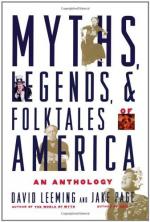|
This section contains 391 words (approx. 2 pages at 300 words per page) |

|
Myths, Legends and Folktales
Summary: Discusses the commonalities of Myths, Legends and Folktales. Desscribes how each has incorrectly been used as synonymous terms. Explores the distinct traits of each style.
The categories of myth, legend and folktale have commonly been used as synonymous terms, however, this is not correct. Each have a style of their own although borders between the three are often blurred. The misconception that they are all one in the same is understandable as they do share several characteristics. Upon closer examination, however, it is obvious that they each have distinct traits.
Common attributes found amongst myths, legends and folklore are to blame for the common generalization. All of them begin as stories told orally and passed down, changing over time, from generation to generation. They also follow the same guidelines of a story. Each has elements of a traditional story including a plot.
Myths are unique because they deal primarily with supernatural entities acting as the primary characters. Secondary characters are often humans. In a myth, time is not easy to measure. Often the...
|
This section contains 391 words (approx. 2 pages at 300 words per page) |

|


